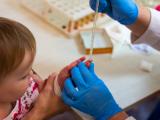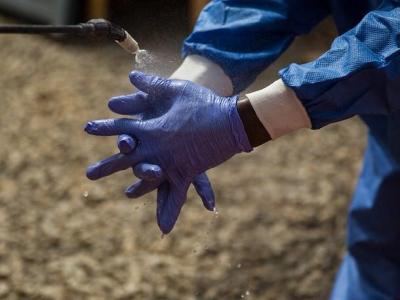Nov 18, 2011 (CIDRAP News) – Influenza activity in the Southern Hemisphere has mostly returned to off-season levels, with only a few countries in tropical regions reporting significant activity, the World Health Organization (WHO) reported today.
In Australia, however, some low-level H3N2 transmission is continuing, the WHO said. Low or no transmission is occurring in temperate areas of South America, as well as South Africa, which saw a second peak this season involving H3N2 and influenza B that followed an earlier peak of 2009 H1N1 activity. The Southern Hemisphere's flu season typically runs from May through October.
Hot spots in tropical areas include Nicaragua, which has reported a sharp rise in 2009 H1N1 virus detections since late September. Most cases are centered in Managua, which has reported 14 hospitalizations for H1N1 infection, the WHO said.
Meanwhile, in El Salvador and Honduras, peaks in H3N2 transmission have tapered off.
In tropical parts of Asia, only localized flu transmission is occurring, including in Cambodia and Laos. Vietnam has seen sustained 2009 H1N1 transmission for most of the year.
Cameroon is the only sub-Saharan African country reporting active flu transmission, with peaking 2009 H1N1 activity, along with an increase in H3N2 detections.
In the Northern Hemisphere, the flu season has not started, though some activity has been detected in a few areas. Canada reported its first flu outbreak this season, which struck a seniors' lodge in Calgary, Alberta. Lab tests revealed H3N2 was the outbreak strain, according to the WHO.
A handful of European countries are reporting sporadic activity, including France, Norway, Sweden, Finland, the Czech Republic, and western parts of the Russian Federation. However, the WHO said the events in those areas haven't led to an increase in flu virus detections.
In the United States, flu indicators show that activity was still low last week, according to a weekly update today from the Centers for Disease Control and Prevention (CDC). The only indicator that showed an increase was the percentage of respiratory specimens that tested positive for influenza, which rose from 0.8% to 1.4%.
Of 12 influenza viruses that the CDC has genetically characterized, 11 were Perth-like H3N2 viruses, in line with the H3N2 component of the seasonal flu vaccine, and one belonged to the Victoria lineage of influenza B, also a component of the vaccine.
Though few viruses have been tested, isolates that have been analyzed were susceptible to the antiviral drugs oseltamivir (Tamiflu) and zanamivir (Relenza).
The CDC said no pediatric flu deaths were reported last week, and overall deaths from pneumonia and flu decreased slightly, but were still at expected levels for this time of year.
Twenty three states reported sporadic flu activity, two less than the previous week, according to the report.
See also:
Nov 18 WHO flu surveillance report
Nov 18 CDC flu surveillance report

















